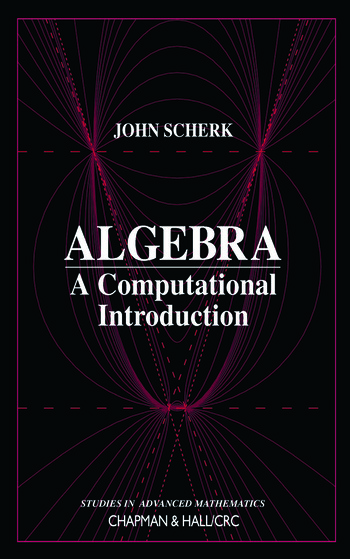
Algebra: A Computational Introduction
This text is an introduction to algebra for undergraduates who are interested in careers which require a strong background in mathematics.
Tag(s): Algebra Linear Algebra
Publication date: 31 Dec 2009
ISBN-10: n/a
ISBN-13: n/a
Paperback: 419 pages
Views: 22,731
Type: Textbook
Publisher: n/a
License: Creative Commons Attribution-NonCommercial-ShareAlike 2.5 Generic
Post time: 06 Mar 2021 06:00:00
Algebra: A Computational Introduction
 This text is an introduction to algebra for undergraduates who are interested in careers which require a strong background in mathematics.
This text is an introduction to algebra for undergraduates who are interested in careers which require a strong background in mathematics.
Publication date: 31 Dec 2009
ISBN-10: n/a
ISBN-13: n/a
Paperback: 419 pages
Views: 22,731
Document Type: Textbook
Publisher: n/a
License: Creative Commons Attribution-NonCommercial-ShareAlike 2.5 Generic
Post time: 06 Mar 2021 06:00:00
Share — copy and redistribute the material in any medium or format
Adapt — remix, transform, and build upon the material
The licensor cannot revoke these freedoms as long as you follow the license terms.
Click here to read the full license.
John Scherk wrote:
This text is an introduction to algebra for undergraduates who are interested in careers which require a strong background in mathematics. It will benefit students studying computer science and physical sciences, who plan to teach mathematics in schools, or to work in industry or finance. The book assumes that the reader has a solid background in linear algebra. For the first 12 chapters elementary operations, elementary matrices, linear independence and rank are important. In the second half of the book abstract vector spaces are used. Students will need to have experience proving results. Some acquaintance with Euclidean geometry is also desirable. In fact I have found that a course in Euclidean geometry fits together very well with the algebra in the first 12 chapters. But one can avoid the geometry in the book by simply omitting chapter 7 and the geometric parts of chapters 9 and 18.
The material in the book is organized linearly. There are few excursions away from the main path. The only significant parts which can be omitted are those just mentioned, the section in chapter 12 on P SL(2, Fp), chapter 13 on abelian groups and the section in chapter 14 on Berlekamp's algorithm.
Tweet
About The Author(s)
Professor Emeritus of Mathematics in Department of Mathematics at University of Toronto. Dr. Scherk's research interests lie in algebraic geometry, more specifically in singularities, Hodge theory, and compactifications of locally symmetric spaces.
